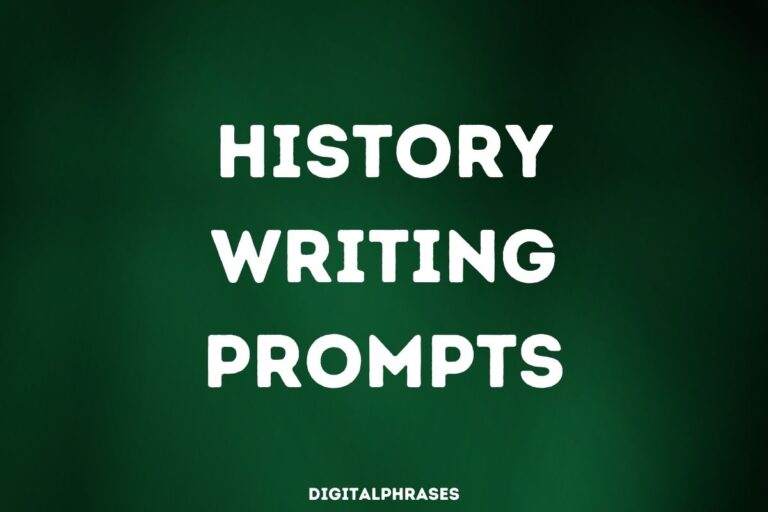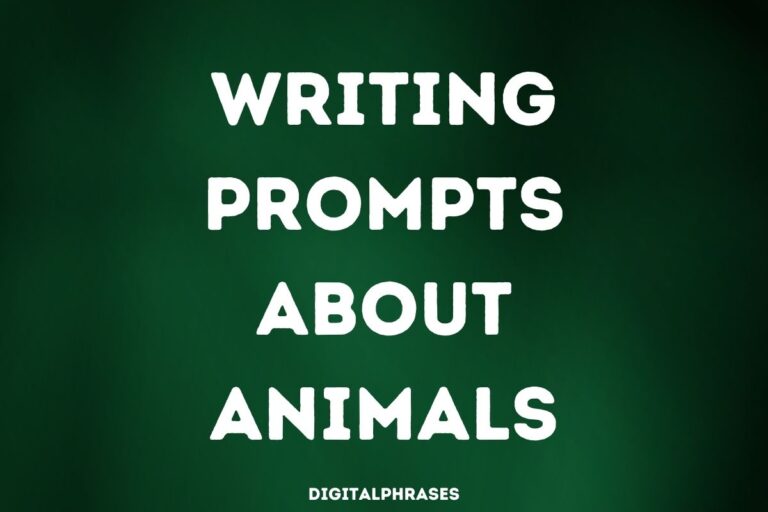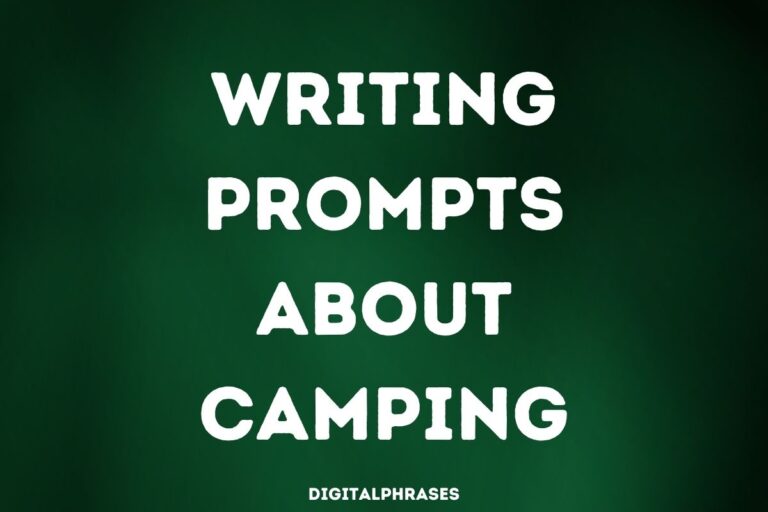30 Writing Prompts About Culture
The world is shrinking!
Borders are blurring, and everyone’s bumping into everyone else. That means understanding different cultures isn’t some fancy extra anymore, it’s like, essential.
Maybe you’re a travel addict, a jet-setting business whiz, or just someone who loves the crazy quilt of human stuff – whatever your reason, culture is an awesome way to see the world in a whole new light.
But where do you even begin with such a giant, messy topic?
Here’s the magic word: writing.
Think of writing prompts like a compass.
They’ll help you navigate the maze of customs, traditions, and all that weird stuff that makes each place unique.
We’re about to crack open a treasure chest of prompts to get your brain buzzing about culture.
Get ready to explore the world, one prompt at a time!
Writing Prompts About Culture
Dive into the world of culinary traditions, exploring how food plays a vital role in expressing cultural identity. Consider a family recipe passed down through generations or a dish unique to a particular region. How do the ingredients, preparation methods, and stories behind these foods reflect the identity and values of the people who consume them? Explore the deep connections between food and cultural expression.
As societies become more globalized, traditional celebrations sometimes evolve to incorporate modern elements. Imagine a traditional festival or celebration from a specific culture. How might this event transform when influenced by modern technologies, values, or social practices? Write about the adaptation and fusion of ancient traditions in today’s globalized world.
Artifacts, whether ancient pottery or a grandmother’s hand-embroidered shawl, are tangible representations of a culture’s history and values. Choose an artifact that resonates with you, perhaps from a museum, personal collection, or historical site. What stories does it tell? Delve into the journey and significance of this artifact within its cultural context.
Language is a living entity, always evolving, but in its evolution, certain words, idioms, or phrases might get lost. Consider a dying language or dialect and the culture it represents. How does the decline or evolution of a language impact the preservation of its corresponding culture? Narrate the journey of a language and the cultural nuances it safeguards.
Throughout history, fashion has often been a medium to challenge societal norms and make political or cultural statements. Choose a period or a culture where fashion played a significant role in societal change or resistance. Examine how fashion became a powerful tool for cultural revolution during that time.
Migration patterns have historically led to the fusion of cultures, birthing new traditions, cuisines, and art forms. Choose two distinct cultures and imagine how they might blend if a significant migration occurred between them. Highlight the beauty and challenges of creating a hybrid culture from two distinct roots.
Every culture has its unique rhythms, melodies, and musical instruments that encapsulate its spirit and history. Select a specific cultural music form, be it folk songs, classical pieces, or indigenous rhythms. How does this music narrate the tales, struggles, and celebrations of its people? Dive into the soundscape of a culture and uncover its stories.
Myths, legends, and folktales are the backbone of many cultures, passing down morals, values, and lessons through the ages. Pick a well-known myth from any culture. How might this myth be interpreted in today’s society? Reimagine a cultural myth in a modern setting, keeping its core message intact.
The skylines and structures of a region can often tell tales of its history, values, and aspirations. Choose an iconic architectural marvel from any culture and delve into its design, purpose, and the stories it embodies. How do the choices in its construction reflect the beliefs and aesthetics of its society? Uncover the symbiotic relationship between architecture and the culture it emerges from.
Sports have a way of uniting communities and nations. Think about a sport that is intrinsic to a particular culture. How has it evolved over time, and what does its popularity (or decline) reveal about societal shifts? Delve into the world of sports as a reflection of cultural change and unity.
Literature is often a mirror to society, reflecting its mores, conflicts, and aspirations. Choose a literary classic from any culture and analyze the societal norms it addresses. How do the narratives and character arcs within the story resonate with or rebel against the cultural values of its time? Explore the intersections of literature and the cultural fabric it is woven from.
The advent of the digital age has reshaped the way cultures express themselves. Consider a traditional art form or practice, and imagine how it might adapt in a world dominated by digital technology. Would it find a new audience, evolve into a different form, or struggle to remain relevant? Analyze the metamorphosis of traditional practices in the digital realm.
Sacred sites, whether temples, churches, or natural landmarks, have long been places of pilgrimage and reverence. Choose a sacred space and explore its significance in its respective culture. How have modern beliefs and practices influenced the traditional importance of this site? Reflect on the shifting sands of faith and the endurance of sacred spaces.
Festivals are a celebration of cultural identity, traditions, and community. However, as the world becomes more interconnected, many festivals draw international crowds. Examine the dynamics of a cultural festival when viewed and experienced by outsiders. Do they enrich the experience, or is there potential for cultural appropriation? Contemplate the complexities of cultural immersion and respect in a globalized world.
Dance, in its many forms, encapsulates the emotions, stories, and rhythms of a culture. Focus on a specific dance form, its origins, and its evolution. How do the movements, attire, and accompanying music narrate a culture’s history and values? Step into the world of dance as a dynamic reflection of cultural legacy.
Family dynamics and structures vary across cultures, influencing societal values, roles, and expectations. Investigate a particular culture’s family setup, whether it’s the nuclear family, joint families, matriarchal setups, or any other. How do these family structures support or challenge the broader societal norms? Delve into the intricate dance between family frameworks and cultural evolution.
Films often encapsulate the ethos, anxieties, and aspirations of a culture at a given time. Choose a notable film from a specific culture and period. How does it address societal issues, mirror popular sentiments, or even challenge dominant narratives? Analyze how cinema serves both as a reflection and influencer of cultural trends.
In the age of the internet, various cultures are leveraging technology to preserve and promote their heritage. Investigate how a culture uses digital platforms, such as virtual museums or augmented reality experiences, to showcase its history. What advantages and challenges does this digital shift present? Unravel the implications of digitizing cultural heritage in a rapidly evolving world.
Era Traditional crafts, from pottery to weaving, carry the essence of a culture’s history and craftsmanship. Choose a dwindling craft form and dive into its techniques, significance, and challenges in a modern marketplace. How can these crafts bridge the old with the new? Highlight the silent tales that each crafted artifact whispers about its origin.
With rapid urban development, many traditional cultural hubs, like old marketplaces or theaters, undergo transformation. Delve into the journey of such a cultural hub adapting to the urban sprawl. How does this evolution impact the community’s cultural expression and memory? Explore the push and pull between urban progress and cultural preservation.
Nature has always held symbolic importance in cultural myths, tales, and rituals. Select a plant or animal deeply rooted in a culture’s lore. What does this species symbolize, and how has its role or perception shifted with changing environmental and societal landscapes? Delve into the symbiotic relationship between nature’s elements and cultural narratives.
Educational systems play a pivotal role in shaping the mindset of the next generation. Analyze how a culture’s education system imparts its history, values, and worldviews. Are there any gaps, biases, or shifts in modern pedagogical approaches that influence cultural continuity? Reflect on education as the torchbearer of cultural legacies and its modern challenges.
Over time, some cultural practices fade away, only to be rediscovered by newer generations seeking identity and roots. Narrate the journey of an individual or a community striving to resurrect a lost tradition. What challenges do they face, and how does the revival impact their sense of identity? Contemplate the balance between progression and the yearning for ancestral connections.
Fusion cuisine is a testament to how different cultures can come together, creating delightful gastronomic experiences. Choose two distinct culinary traditions and imagine a fusion dish they might inspire. How do flavors, ingredients, and cooking techniques intertwine to create something novel, yet rooted in tradition? Explore the art and nuances of blending culinary cultures.
Natural landscapes, be it mountains, rivers, or forests, have always held significant importance in shaping the lifestyles and beliefs of native cultures. Choose a prominent landscape feature and explore its significance in the legends, livelihoods, and values of its indigenous people. Probe into how nature’s canvas plays a central role in weaving cultural tales.
Every culture boasts symbols that hold deep meanings—like the dragon in Chinese lore or the phoenix in Greek mythology. Pick a well-known symbol from a culture and trace its evolution over centuries. How has its significance or representation shifted with time, and what factors influenced those changes? Dive deep into the ever-changing meanings and perceptions attached to iconic cultural symbols.
Throughout history, societies have faced natural and man-made disasters that have left indelible marks on their culture. Explore how a specific culture coped with and evolved due to such a calamity. Did they develop new rituals, narratives, or artistic expressions in response? Examine the capacity of culture to adapt, persevere, and transform in the face of adversity.
Traditional games, often passed down through generations, reveal a lot about a culture’s values, strategies, and social dynamics. Choose an ancient game, perhaps one less known globally, and dissect its rules, objectives, and societal significance. Highlight how these games serve as playful windows into the psyche and history of a culture.
Modern cities often become melting pots of various cultures, each adding its unique flavor to the urban tapestry. Focus on a metropolis known for its multicultural vibrancy. How do the diverse communities coexist, celebrate their distinct identities, and contribute to the city’s ethos? Narrate the dance of coexistence and influence in a multicultural urban setting.
Often, it’s personal stories that provide the most profound insights into a culture’s heart and soul. Envision a diary entry of an individual from a distinct culture, capturing a day in their life, their hopes, struggles, and joys. Through this intimate lens, what larger cultural narratives emerge? Unfold the tapestry of a culture through the personal lens of one of its members.






